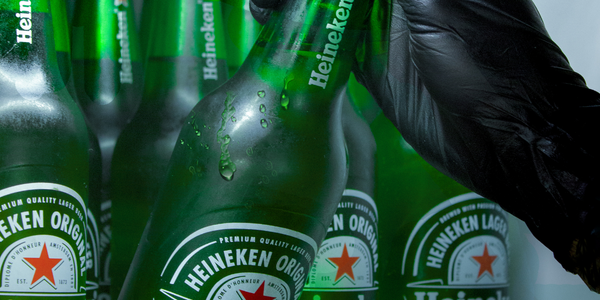Technology Category
- Cybersecurity & Privacy - Security Compliance
- Sensors - GPS
Applicable Industries
- Food & Beverage
- Retail
Applicable Functions
- Quality Assurance
- Sales & Marketing
Use Cases
- Personnel Tracking & Monitoring
- Time Sensitive Networking
Services
- Testing & Certification
- Training
About The Customer
Base Wood Fired Pizza is a contemporary pizzeria chain based in Dublin, founded by Shane Crilly in 2008. The company offers quality, made-to-order, artisan-style pizzas, using the best Italian ingredients sourced through a partnership with a cooperative of Italian producers and farmers. The company has seven stores across Dublin and employs over 100 people. Base Wood Fired Pizza is committed to improving the standard of pizza in Dublin and inspiring healthier choices by offering real quality food. The company has a people-first mission, striving for positive change in their employees' lives and the communities they serve. They aim to provide a safe and secure workplace for their staff, offering opportunities for learning and skill development.
The Challenge
Base Wood Fired Pizza, a thriving pizzeria chain in Dublin, was facing significant operational challenges despite its success. The company, which prides itself on offering artisanal, fresh, and authentic pizzas, was struggling with back-office administration, employee scheduling, attendance, and reporting issues. One of the biggest challenges was ensuring compliance with all relevant legislations, including staff working hours, break times, wage calculations, and holiday pay. The lack of a formal process to manage these legislations was a significant issue. The manual clock-in system for staff and timesheets was ineffective and often overlooked. Staff would forget to record their hours or break times, leading to inaccurate labor costs and error-prone calculations for holiday and overtime hours. Additionally, the physical storage of documents such as employee contracts, working visas, and supplier information was time-consuming and messy, indicating a need for digital transformation.
The Solution
Base Wood Fired Pizza implemented Bizimply, a cloud-based software solution, to address their operational and compliance challenges. The software helped the company stay fully compliant with all relevant legislations, including GDPR and the Organisation of Working Time Act. Bizimply also integrated HR and financial KPIs, enabling store managers to maintain HR compliance, rostering, and employee documentation while managing weekly financial KPIs such as sales, forecasts, labor, and wage cost control. The cloud-based nature of the software allowed managers and administrators to access their account from anywhere, making it easier to manage multi-location businesses. All paper trail clutter, including breaksheets, rosters, and employee documentation, was digitized and made easily accessible on Bizimply. The software also improved staff communications and scheduling efficiency, with staff receiving their rosters via the MyZimply app, reducing confusion and errors.
Operational Impact
Quantitative Benefit

Case Study missing?
Start adding your own!
Register with your work email and create a new case study profile for your business.
Related Case Studies.

Case Study
The Kellogg Company
Kellogg keeps a close eye on its trade spend, analyzing large volumes of data and running complex simulations to predict which promotional activities will be the most effective. Kellogg needed to decrease the trade spend but its traditional relational database on premises could not keep up with the pace of demand.

Case Study
HEINEKEN Uses the Cloud to Reach 10.5 Million Consumers
For 2012 campaign, the Bond promotion, it planned to launch the campaign at the same time everywhere on the planet. That created unprecedented challenges for HEINEKEN—nowhere more so than in its technology operation. The primary digital content for the campaign was a 100-megabyte movie that had to play flawlessly for millions of viewers worldwide. After all, Bond never fails. No one was going to tolerate a technology failure that might bruise his brand.Previously, HEINEKEN had supported digital media at its outsourced datacenter. But that datacenter lacked the computing resources HEINEKEN needed, and building them—especially to support peak traffic that would total millions of simultaneous hits—would have been both time-consuming and expensive. Nor would it have provided the geographic reach that HEINEKEN needed to minimize latency worldwide.

Case Study
Improving Production Line Efficiency with Ethernet Micro RTU Controller
Moxa was asked to provide a connectivity solution for one of the world's leading cosmetics companies. This multinational corporation, with retail presence in 130 countries, 23 global braches, and over 66,000 employees, sought to improve the efficiency of their production process by migrating from manual monitoring to an automatic productivity monitoring system. The production line was being monitored by ABB Real-TPI, a factory information system that offers data collection and analysis to improve plant efficiency. Due to software limitations, the customer needed an OPC server and a corresponding I/O solution to collect data from additional sensor devices for the Real-TPI system. The goal is to enable the factory information system to more thoroughly collect data from every corner of the production line. This will improve its ability to measure Overall Equipment Effectiveness (OEE) and translate into increased production efficiencies. System Requirements • Instant status updates while still consuming minimal bandwidth to relieve strain on limited factory networks • Interoperable with ABB Real-TPI • Small form factor appropriate for deployment where space is scarce • Remote software management and configuration to simplify operations

Case Study
Energy Management System at Sugar Industry
The company wanted to use the information from the system to claim under the renewable energy certificate scheme. The benefit to the company under the renewable energy certificates is Rs 75 million a year. To enable the above, an end-to-end solution for load monitoring, consumption monitoring, online data monitoring, automatic meter data acquisition which can be exported to SAP and other applications is required.

Case Study
Coca Cola Swaziland Conco Case Study
Coco Cola Swaziland, South Africa would like to find a solution that would enable the following results: - Reduce energy consumption by 20% in one year. - Formulate a series of strategic initiatives that would enlist the commitment of corporate management and create employee awareness while helping meet departmental targets and investing in tools that assist with energy management. - Formulate a series of tactical initiatives that would optimize energy usage on the shop floor. These would include charging forklifts and running cold rooms only during off-peak periods, running the dust extractors only during working hours and basing lights and air-conditioning on someone’s presence. - Increase visibility into the factory and other processes. - Enable limited, non-intrusive control functions for certain processes.








